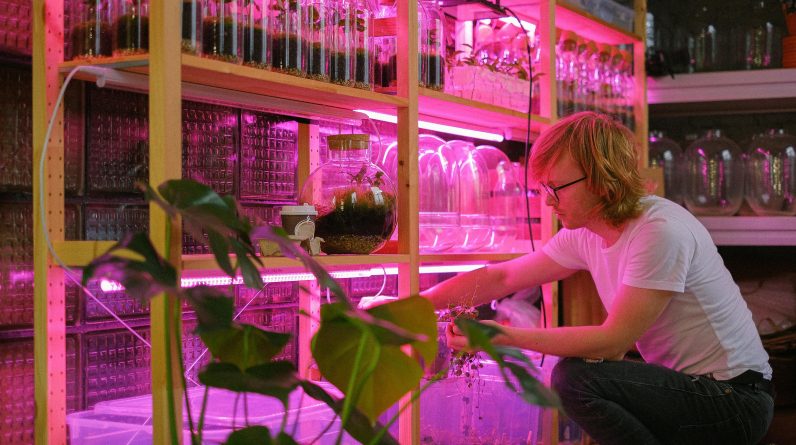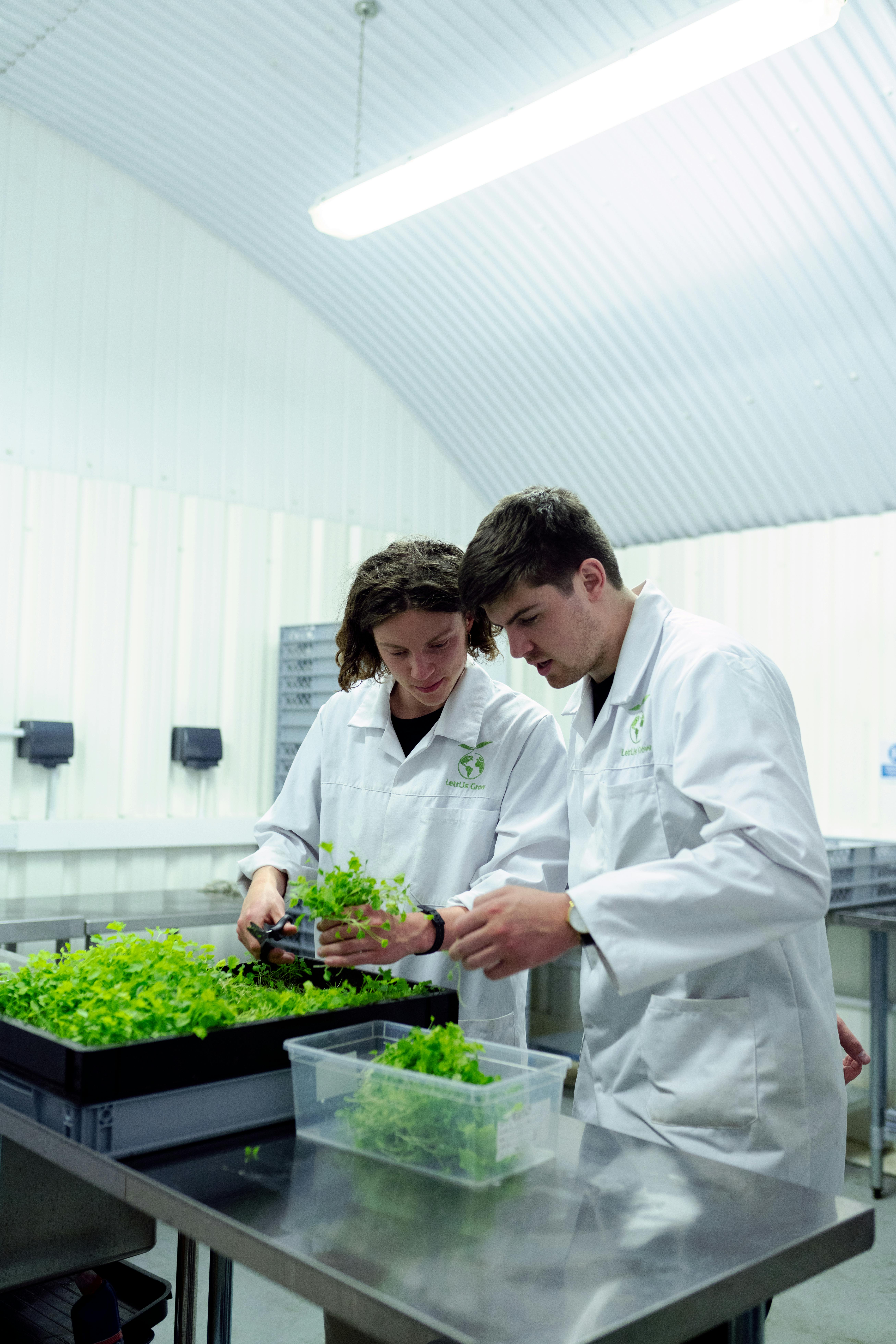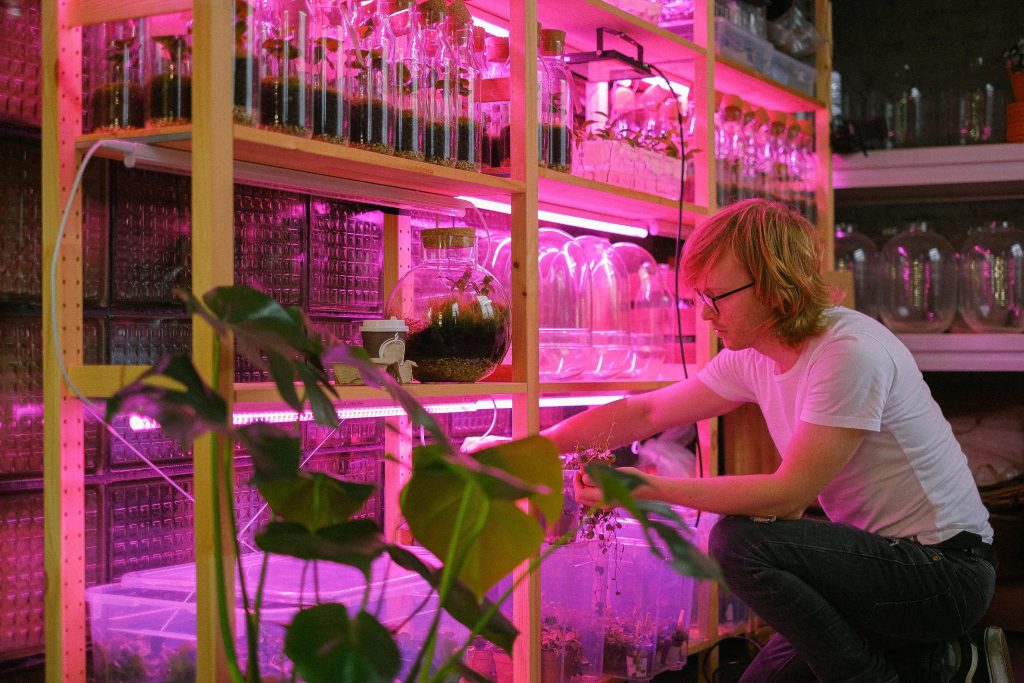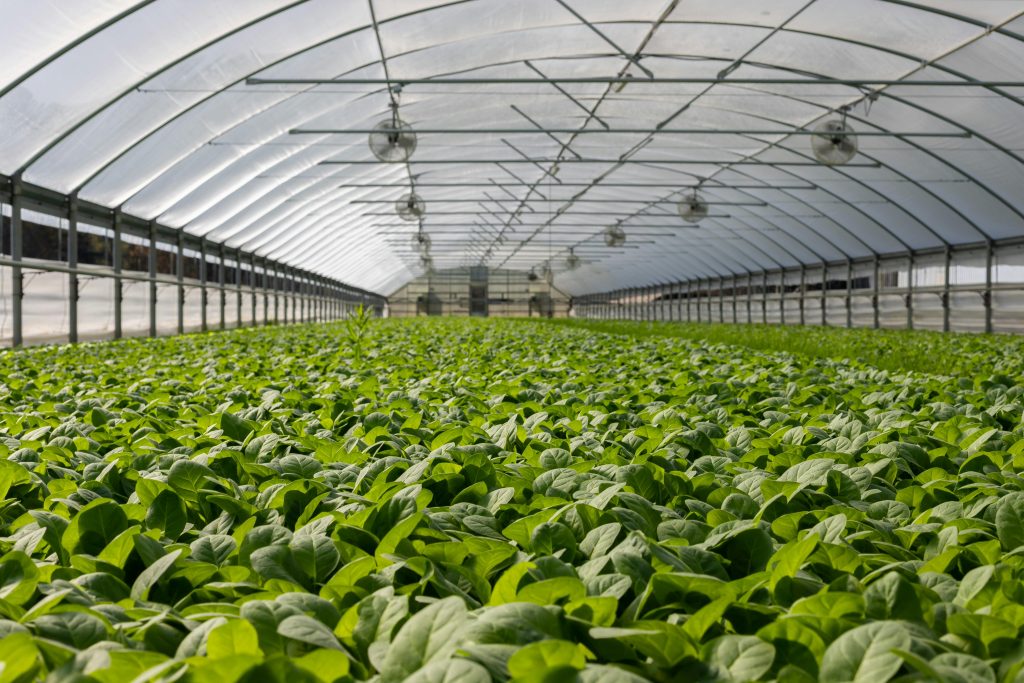
Are you interested in trying out hydroponic gardening but don’t know where to start? Fear not, as this beginner’s guide will walk you through the basics of DIY hydroponic growing systems. Whether you’re looking to grow herbs, vegetables, or flowers, hydroponics offers an efficient and sustainable way to cultivate plants without traditional soil. Let’s get started!

This image is property of images.pexels.com.
What is Hydroponic Gardening?
If you’re new to the concept of hydroponics, you might be wondering what it’s all about. Hydroponic gardening is a method of growing plants without soil by using a nutrient-rich solution to deliver essential minerals directly to the plant’s roots. This technique allows plants to access nutrients more efficiently, resulting in faster growth and increased yields compared to traditional soil gardening.
Benefits of Hydroponic Gardening
There are numerous benefits to using hydroponic growing systems. By eliminating soil from the equation, plants can absorb nutrients more effectively, leading to faster growth rates and higher yields. Hydroponic systems also use water more efficiently, requiring up to 90% less water than traditional soil gardening methods. Additionally, these systems reduce the risk of soil-borne diseases and pests, resulting in healthier plants and reduced need for chemical pesticides.
Types of Hydroponic Systems
When it comes to DIY hydroponic growing systems, there are several options to choose from. Each type of system has its advantages and is suitable for different plants and growing conditions. Let’s explore some of the most common types of hydroponic systems:
Deep Water Culture (DWC)
In a Deep Water Culture system, plants are suspended in a nutrient-rich water solution, allowing their roots to grow directly into the water. An air pump provides oxygen to the roots, promoting healthy growth. DWC systems are easy to set up and are ideal for leafy greens and herbs.
Nutrient Film Technique (NFT)
The Nutrient Film Technique involves a constant flow of nutrient solution over the plant roots, which are housed in a shallow channel. This system is great for growing plants with smaller root systems, such as lettuce and strawberries. NFT systems are compact and require minimal growing medium.
Ebb and Flow (Flood and Drain)
In the Ebb and Flow system, plants are periodically flooded with a nutrient solution before draining away. This cycle helps to deliver oxygen to the roots, preventing waterlogging. Ebb and Flow systems are versatile and can be used to grow a wide variety of plants.
Aeroponics
Aeroponic systems involve misting plant roots with a nutrient solution, allowing them to absorb nutrients and oxygen directly from the air. This method is highly efficient and can produce faster growth rates than other hydroponic systems. Aeroponics is ideal for growing plants like tomatoes and peppers.
Components of a DIY Hydroponic System
To build your own hydroponic growing system, you’ll need a few essential components. These include containers, growing medium, nutrient solution, a water pump, and a timer. Let’s take a closer look at each of these components and how they work together:
Containers
Containers are used to hold the plants and the nutrient solution in a hydroponic system. You can use a variety of containers, such as buckets, plastic bins, or PVC pipes, depending on the type of system you’re creating.
Growing Medium
Growing medium is used to support the plant roots and provide stability. Common options include perlite, vermiculite, coconut coir, and expanded clay pellets. The growing medium should be lightweight, pH-neutral, and provide good aeration for the roots.
Nutrient Solution
The nutrient solution is a mixture of essential minerals and nutrients that plants need to grow. You can purchase pre-made hydroponic nutrient solutions, or you can mix your own using fertilizer salts and water. The nutrient solution should be well-balanced and tailored to the specific needs of the plants you’re growing.
Water Pump
A water pump is used to circulate the nutrient solution through the hydroponic system. The pump delivers the solution to the plants’ roots and helps to oxygenate the water. Choose a pump with the appropriate flow rate for your system size.
Timer
A timer is essential for automating the watering cycle in your hydroponic system. By setting a timer, you can control how often and for how long the plants receive the nutrient solution. This ensures that the plants get the right amount of water and nutrients at regular intervals.
Setting Up Your DIY Hydroponic System
Now that you have all the components for your hydroponic system, it’s time to put everything together. Follow these steps to set up your DIY hydroponic growing system:
Step 1: Choose a Location
Select a suitable location for your hydroponic system. Make sure the area has access to natural light or artificial grow lights, as plants need adequate light to grow. Ensure the space is well-ventilated and easily accessible for maintenance.
Step 2: Assemble the Containers
Prepare your containers by drilling holes for the plant pots or channels. Arrange the containers in a way that allows for easy access to the plants and nutrient solution. Ensure there is proper drainage to prevent waterlogging.
Step 3: Add Growing Medium
Place the growing medium in the containers and insert the plant pots or channels. Make sure the medium is evenly distributed and provides adequate support for the plant roots. Adjust the level of the medium to accommodate the plants’ root systems.
Step 4: Mix the Nutrient Solution
Prepare the nutrient solution according to the instructions on the fertilizer package. Ensure the solution is well-mixed and at the correct pH level for optimal plant growth. Test the pH regularly and adjust if necessary.
Step 5: Install the Water Pump
Position the water pump at the bottom of the reservoir and connect the tubing to the containers. Secure the tubing in place to prevent leaks and ensure a steady flow of the nutrient solution to the plants.
Step 6: Set the Timer
Program the timer to water the plants at regular intervals throughout the day. Adjust the timing based on the plants’ water needs and the system’s requirements. Monitor the system closely to ensure everything is working correctly.

This image is property of images.pexels.com.
Maintaining Your Hydroponic System
Once your DIY hydroponic growing system is up and running, maintenance is key to ensuring healthy plant growth. Here are some tips for maintaining your hydroponic system:
Monitor pH and EC Levels
Regularly check the pH and electrical conductivity (EC) levels of the nutrient solution to ensure they are within the optimal range for plant growth. Adjust the pH as needed using pH-up or pH-down solutions.
Check Water Levels
Keep an eye on the water level in the reservoir and top up with fresh water as needed to maintain a consistent nutrient solution level. Avoid letting the reservoir run dry, as this can stress the plants and impact growth.
Inspect Plants for Pests and Diseases
Regularly inspect your plants for signs of pests, such as aphids or spider mites, and diseases like powdery mildew or root rot. Treat any issues promptly with organic pest control methods or fungicides to prevent further damage.
Prune and Harvest Regularly
Pruning your plants helps to promote healthy growth and prevents overcrowding. Harvest mature plants regularly to encourage new growth and ensure a continuous harvest. Use sharp scissors or shears to avoid damaging the plants.
Clean and Maintain Equipment
Clean your containers, tubing, and water pump regularly to prevent algae buildup and clogs. Replace any worn or damaged parts, such as tubing or pump filters, to keep the system running smoothly. Regular maintenance helps to extend the life of your hydroponic system.
Troubleshooting Common Issues
Despite your best efforts, you may encounter some common issues with your hydroponic system. Here are a few troubleshooting tips to help you address common problems:
Yellowing Leaves
Yellowing leaves can be a sign of nutrient deficiencies or imbalances in the nutrient solution. Check the pH and EC levels and adjust as needed. Ensure the plants are getting enough light and nutrients for healthy growth.
Algae Growth
Algae growth is common in hydroponic systems exposed to light. To prevent algae buildup, cover the reservoir with a dark material or use opaque containers. Reduce the amount of light reaching the nutrient solution to inhibit algae growth.
Root Rot
Root rot is caused by overwatering or poor drainage in the hydroponic system. Ensure proper drainage in the containers and avoid waterlogging the roots. Trim any affected roots and consider adding beneficial bacteria to prevent root rot.
Wilting Plants
Wilting plants may indicate underwatering, nutrient deficiencies, or root damage. Check the water levels and nutrient solution strength, and adjust as needed. Examine the roots for signs of damage or disease and take corrective action.

This image is property of images.pexels.com.
Conclusion
Congratulations on taking the first step towards building your own DIY hydroponic growing system! By following this beginner’s guide, you now have the knowledge and tools necessary to create a successful hydroponic garden at home. Remember to start small, experiment with different plants and systems, and enjoy the process of growing fresh, nutritious crops year-round. Happy gardening!
Related Content
- Ultimate Guide to ebb and flow hydroponics: 10 Effective Tips for 2025 Success
- How to Select the Best Lighting System for Your Hydroponic Setup
- 2025 Ultimate Guide: 7 Effective Home Hydroponic Grow Box Tips
- 10 Effective Tips for the Best Low Cost Hydroponic System in 2025
- What Makes Seeds Fail To Germinate?










